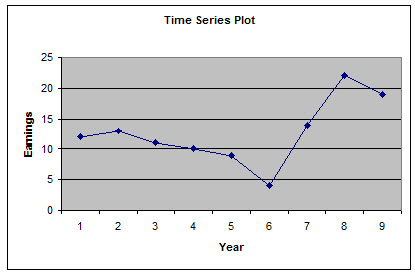Exponential Smoothing with Trend Adjustment Forecast Calculator
Instructions: You can use this Exponential Smoothing with Trend Adjustment Forecast Calculator for a given times series data set, by providing a set of data and smoothing constant. Also, you can indicate if the data periods are months or not, and you optionally can write your own custom names for the time periods in the form below:
Trend-Adjusted Exponential Smoothing Calculator
More about the Exponential Smoothing Forecasts with Trend Adjustment so you can get a better interpret the results that are provided by this calculator. The idea behind Trend-Adjusted Exponential Smoothing for making forecasts consists of using an exponential smoothing form of forecasting, but with a correction to account for a trend (when it exists). Otherwise, when there is a trend and it is not accounted for with exponential smoothing, its forecasts tend to lag behind. The trend-adjusted exponential smoothing forecast costs of two parts: The exponentially smoothed forecast \((F_t)\) and the exponentially smoothed trend \((T_t)\). The trend adjusted exponential smoothing is \((FIT_t)\) computed as
\[ FIT_t = F_t + T_t \]and the exponentially smoothed and exponentially smoothed trend parts are computed as follows:
\[ F_t = \alpha A_{t-1} + (1-\alpha) (F_{t-1} + T_{t-1}) \] \[ T_t = \beta (F_t - F_{t-1}) + (1-\beta) T_{t-1} \]where \(\alpha\) is the smoothing constant, and \(\beta\) is the trend smoothing constant.
The Trend-Adjusted Exponential Smoothing method of forecasting is a more sophisticated forecasting method, used commonly when there is a trend component in the time series. Other common methods are the naive forecasting method , the weighted moving averages , the moving averages forecasting method , and the linear trend forecasting method, just to mention a few.





